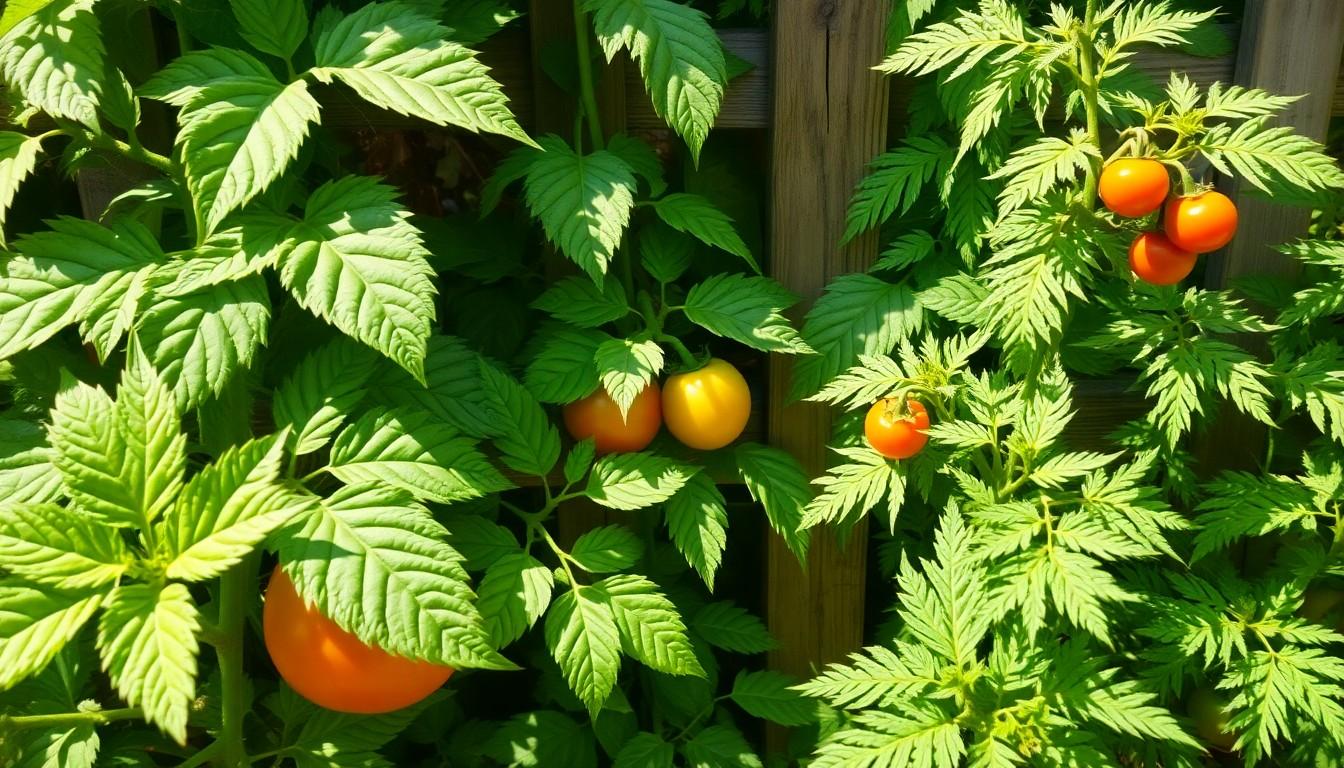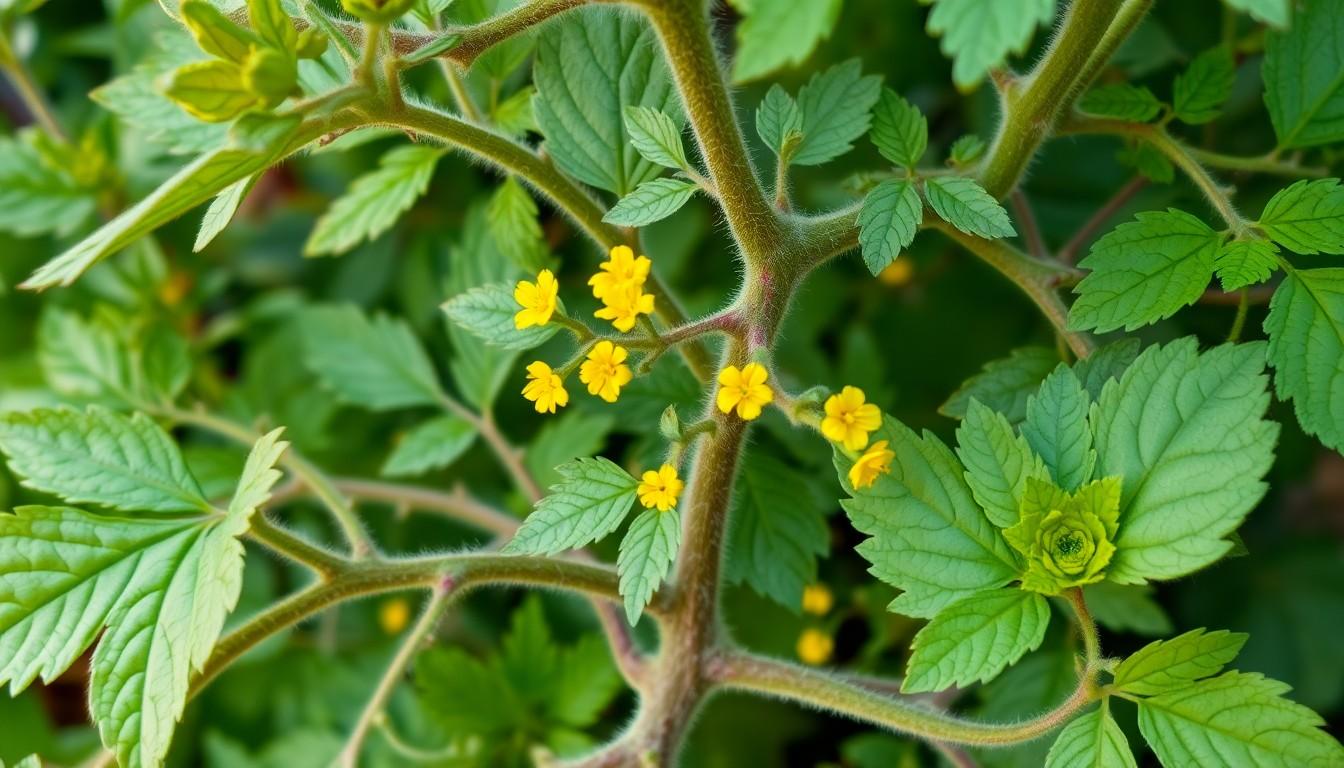Physical Address
304 North Cardinal St.
Dorchester Center, MA 02124

Tomatoes are the rock stars of the garden world, but identifying the right plant can feel like a game of botanical hide-and-seek. With so many varieties out there, from the tiny cherry to the hefty beefsteak, even seasoned gardeners can find themselves scratching their heads. But don’t worry; it’s easier than finding a needle in a haystack—unless that needle is a rogue tomato sprout.
Tomato plant identification focuses on recognizing distinct characteristics that differentiate the various types. Key factors include leaf shape, flower structure, and fruit size. Each of these features is essential for accurate identification.
Leaves vary significantly among tomato varieties. Sumo-sized beefsteak plants exhibit large, broad leaves, while smaller cherry tomato plants show finely divided, feathery leaves. Observing the leaf structure aids in narrowing down the type.
Flowers also play a crucial role in identification. Most tomato plants develop small, yellow flowers, but some cultivars may display different colors or sizes. Identifying these floral characteristics can guide gardeners in distinguishing between varieties.
Fruit size provides another layer of identification. Large tomatoes, such as beefsteaks, weigh between 1 to 2 pounds, while smaller varieties, like cherry tomatoes, typically weigh less than 1 ounce. Understanding these weight distinctions helps in visual identification.
Fruit color further enhances identification. Tomatoes can range from the classic red to yellow, green, and even purple. Recognizing these color variations assists in identifying specific cultivars.
Environmental factors affect tomato plant growth and characteristics. Different growing conditions may alter the appearance of leaves, flowers, and fruits. Monitoring these influences is vital for accurate identification in diverse environments.
By focusing on these key features—leaves, flowers, fruit size, and color—gardeners can effectively identify tomato plants. Utilizing a combination of these identifying factors simplifies the process and enriches gardening experiences.

Identifying tomato plants involves observing several distinct characteristics. Gardeners recognize that leaf structure, stem appearance, and flower characteristics play important roles in differentiating between varieties.
Leaf structure varies widely among tomato varieties. Beefsteak plants feature large, broad leaves that provide ample surface area for photosynthesis. In contrast, cherry tomato plants have finely divided, feathery leaves that appear delicate. Color also plays a role in identification; many tomato leaves display a rich green hue, but some varieties exhibit yellow or even purple undertones. Understanding these variations allows gardeners to narrow down their identification.
Stem appearance significantly influences identification as well. Tomato plant stems tend to be sturdy and can vary in thickness depending on the variety. Thin, less robust stems typically indicate determinate types, while indeterminate varieties often showcase thicker, more robust stems. Additionally, stem color ranges from green to purplish shades, which can provide clues about the specific cultivar. Noticing these structural differences aids in the accurate identification of tomato plants.
Flower characteristics further differentiate tomato plants. Most plants produce small, yellow flowers, but variations exist among cultivars. Certain types may display larger flowers or different color hues, such as white or purple, which can be crucial for identification. Observing the arrangement of flowers on the stem contributes to understanding the growth habits of the plant. Cultivating knowledge of these floral traits helps gardeners distinguish between the many available tomato varieties.
Tomato plants come in various types, each with unique characteristics. Understanding these types can simplify identification.
Determinate tomato plants grow to a fixed height and produce their fruit all at once. These varieties typically require less staking. Indeterminate types keep growing and producing fruit throughout the season. They benefit from regular pruning and support as they can reach impressive heights. Determinate varieties, like Roma, suit container gardening well, while indeterminate varieties, such as Beefsteak, thrive in larger spaces.
Heirloom tomatoes come from open-pollinated seeds, often boasting unique flavors and colors. These varieties can be saved and replanted for future crops. Hybrid tomatoes, created by crossing two varieties, offer uniformity and disease resistance. They generally yield more fruit but lack some of the rich flavors associated with heirlooms. Examples of heirloom varieties include Brandywine, while Better Boy represents a common hybrid choice.
Tomato plants face various diseases that affect their growth and yield. Understanding the symptoms helps in early detection and effective management.
Yellowing leaves may indicate nutrient deficiencies or stress. Dark spots on leaves can suggest fungal infections like early blight. Wilting plants often signal root rot or vascular diseases. Additionally, small blemishes on fruits might relate to blossom end rot or sunscald. Growth stunting can arise from viral infections or nematodes. Observing these symptoms aids in identifying potential problems before they escalate.
Implementing crop rotation reduces the risk of soil-borne diseases. Using disease-resistant varieties also minimizes exposure to common pathogens. Proper watering techniques prevent over-saturation, which leads to root rot. Neem oil or fungicides serve as effective treatments for managing fungal infections. Regularly removing infected plant parts can stop disease spread. Applying mulch helps maintain soil moisture and prevents weed competition.
Identifying tomato plants can be an enjoyable and rewarding aspect of gardening. By focusing on key characteristics such as leaf shape, stem thickness, and flower structure, gardeners can confidently distinguish between various tomato varieties. Understanding the differences between determinate and indeterminate types, as well as heirloom and hybrid classifications, further simplifies the identification process.
Awareness of common diseases and their symptoms is crucial for maintaining healthy plants. By applying the strategies outlined in the article, gardeners can enhance their skills and enjoy a fruitful gardening experience. With a little practice and observation, anyone can master the art of tomato plant identification.